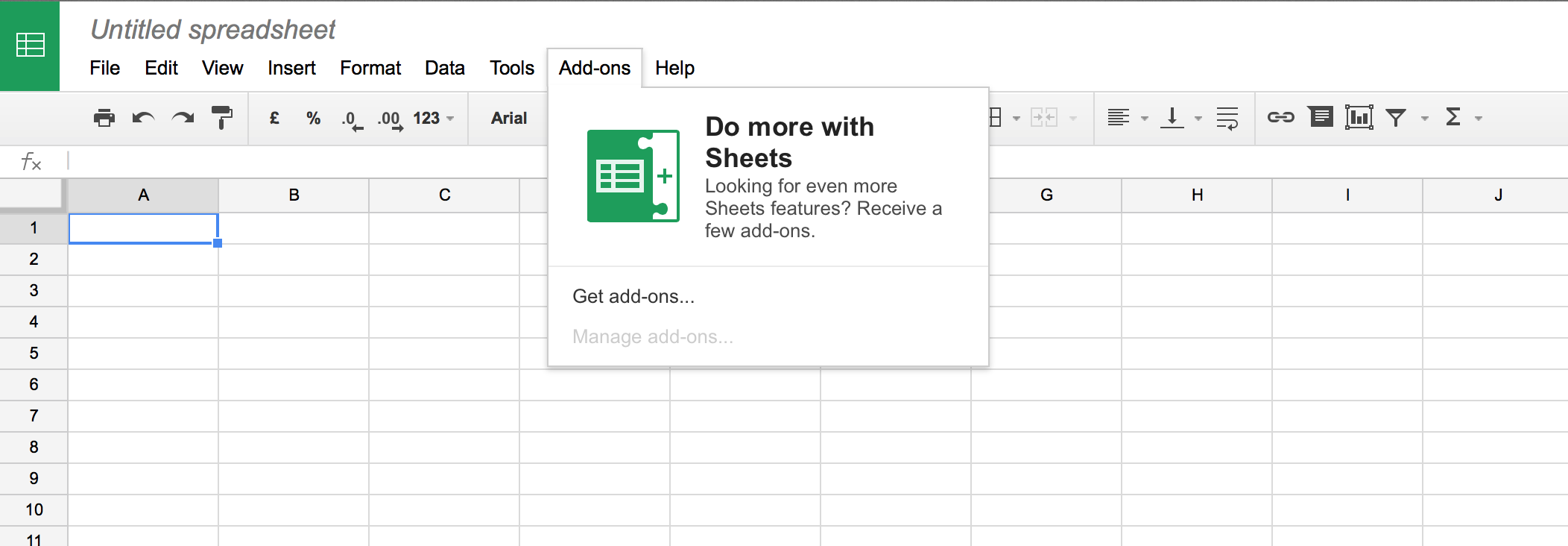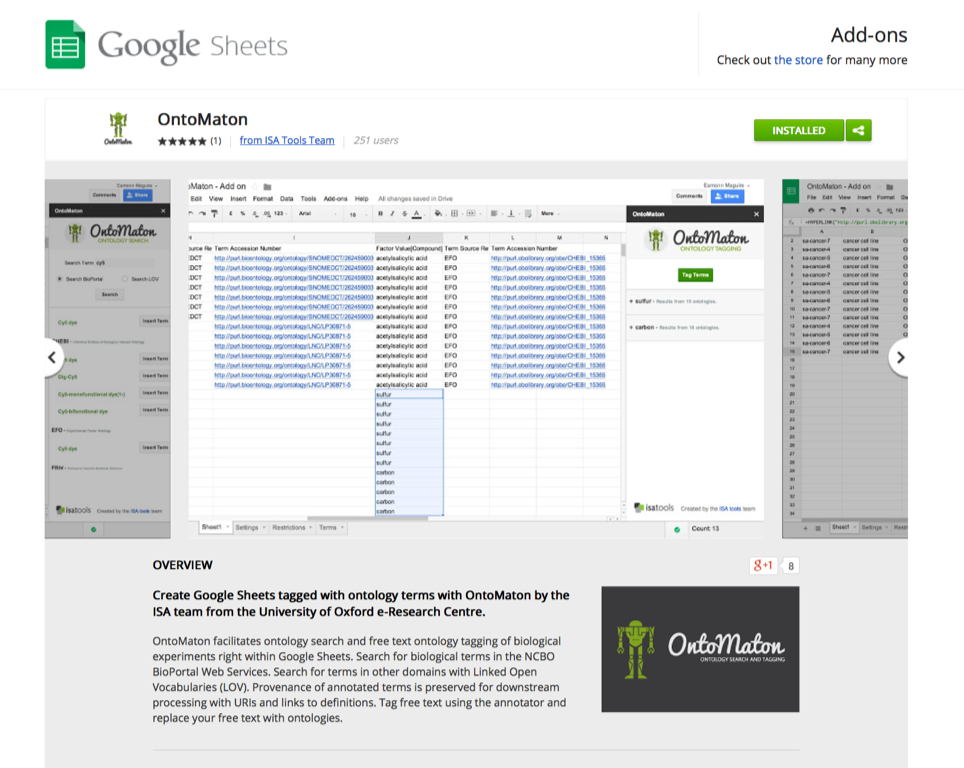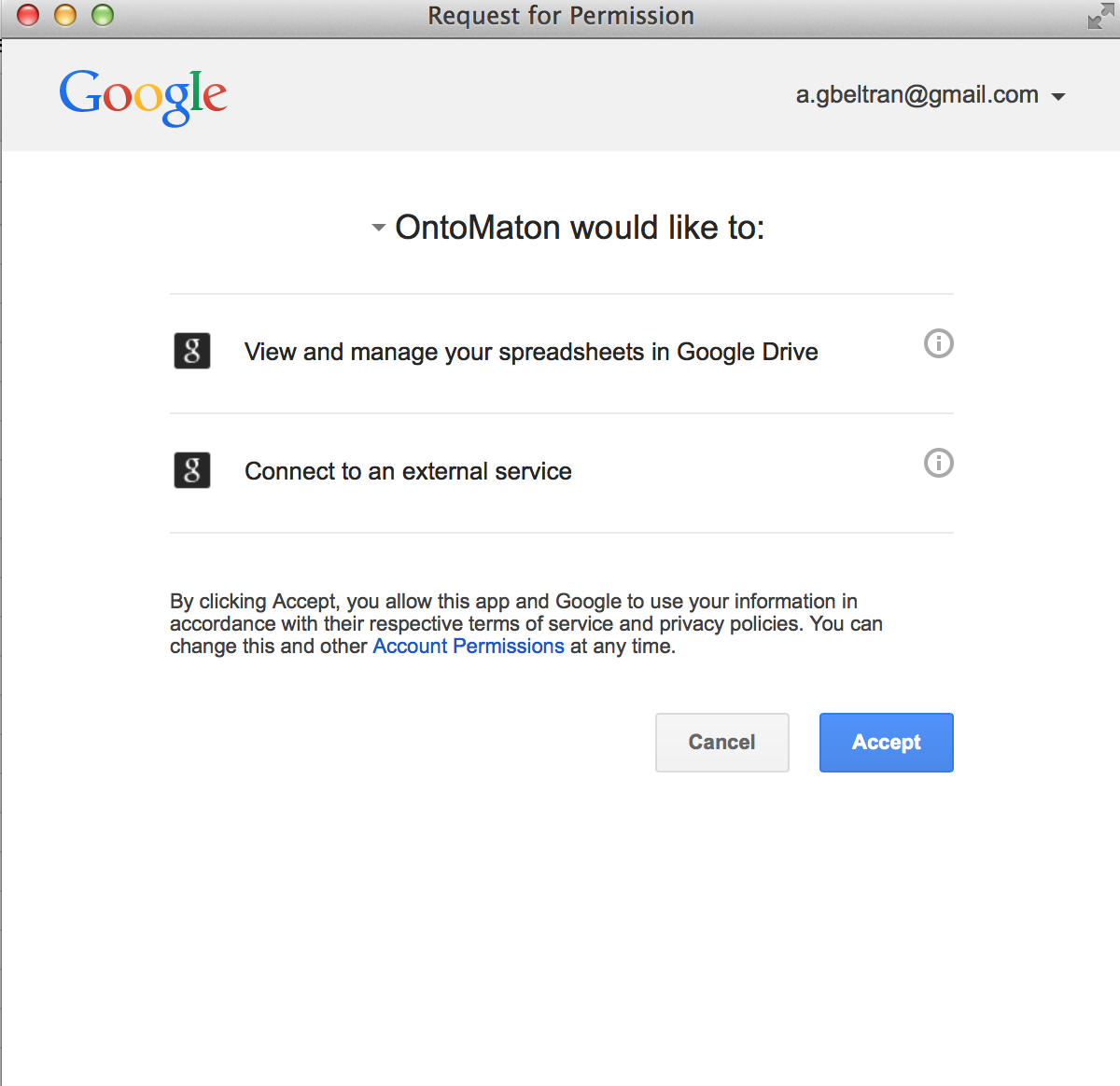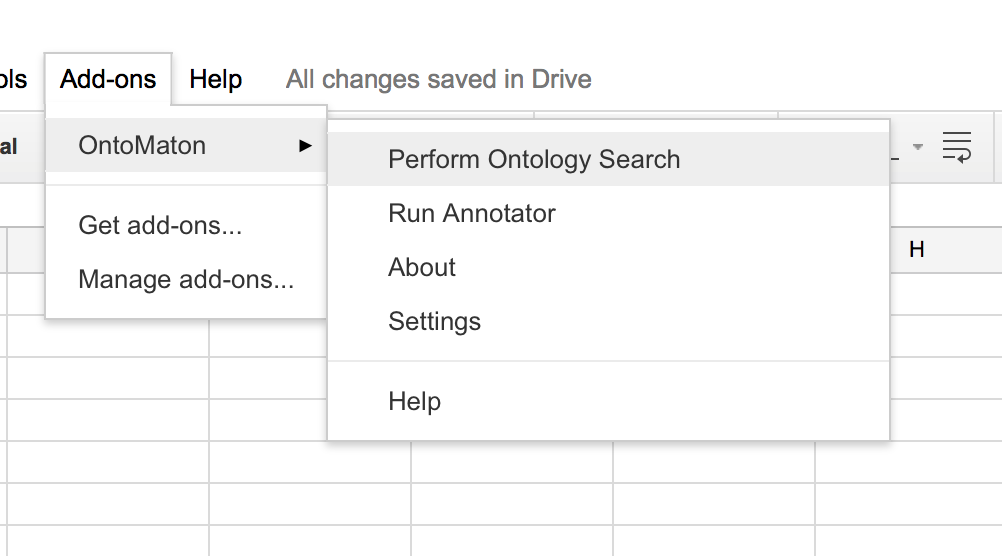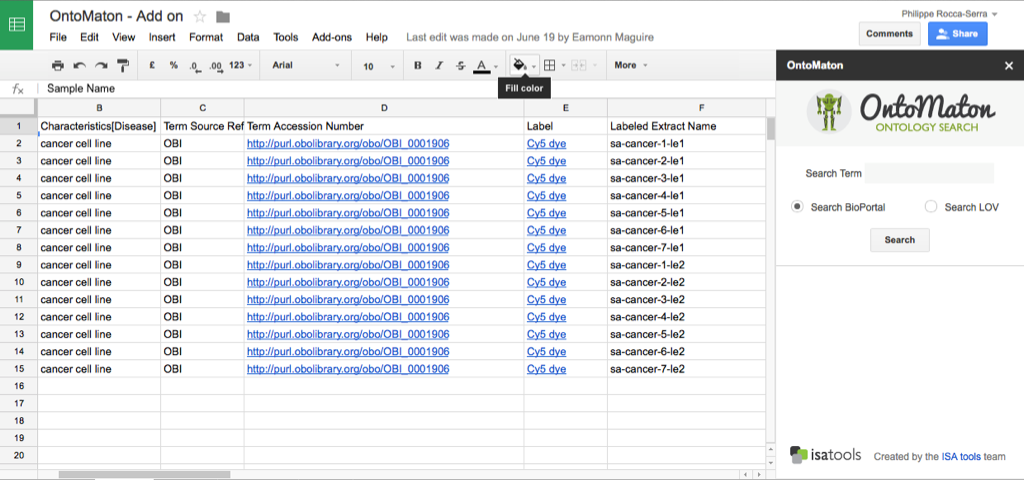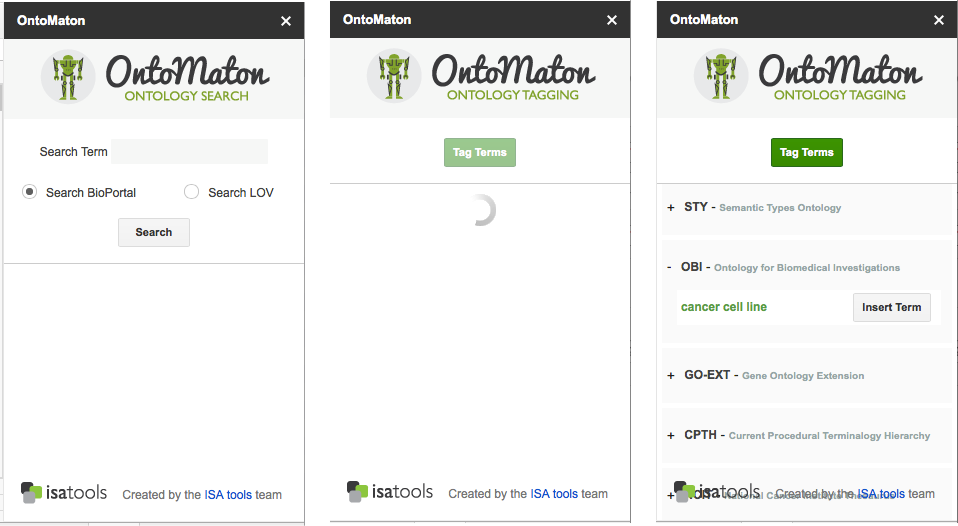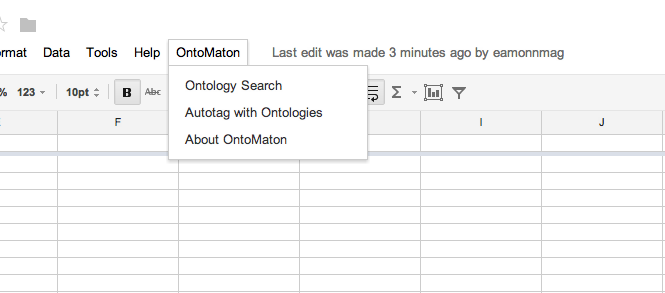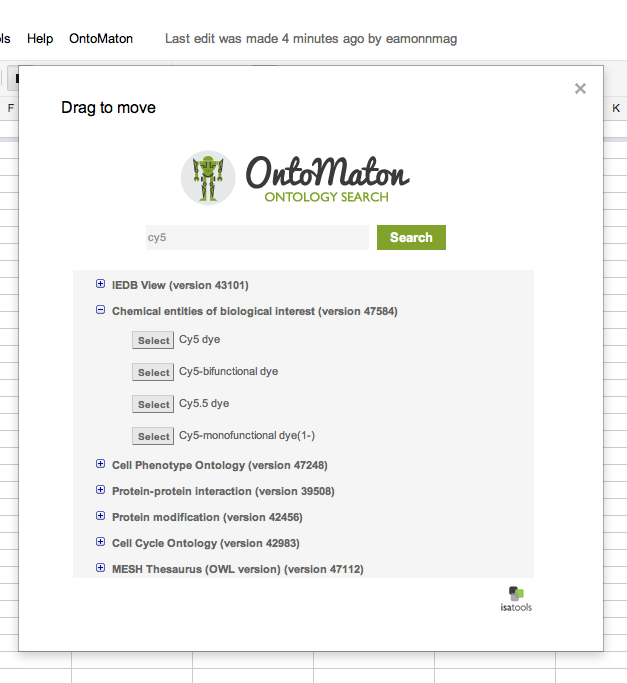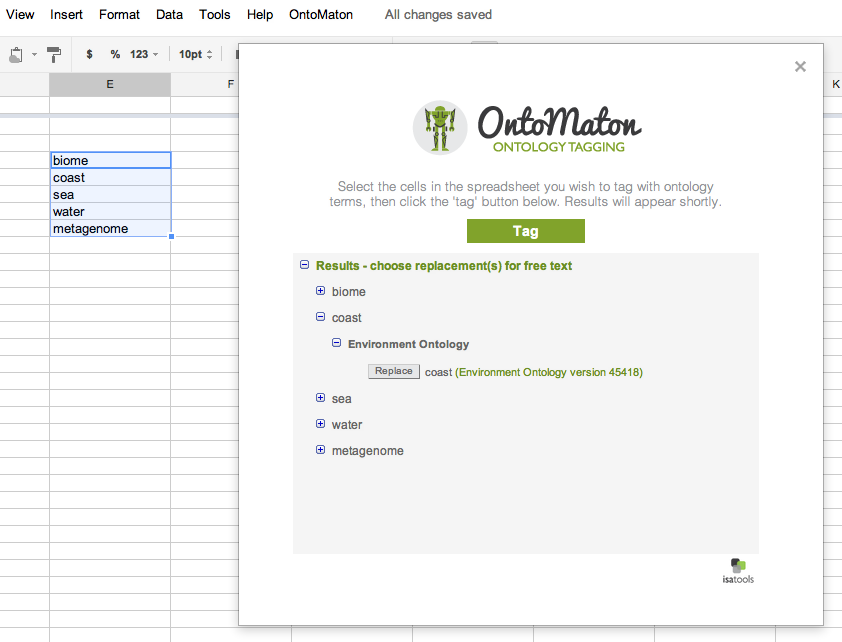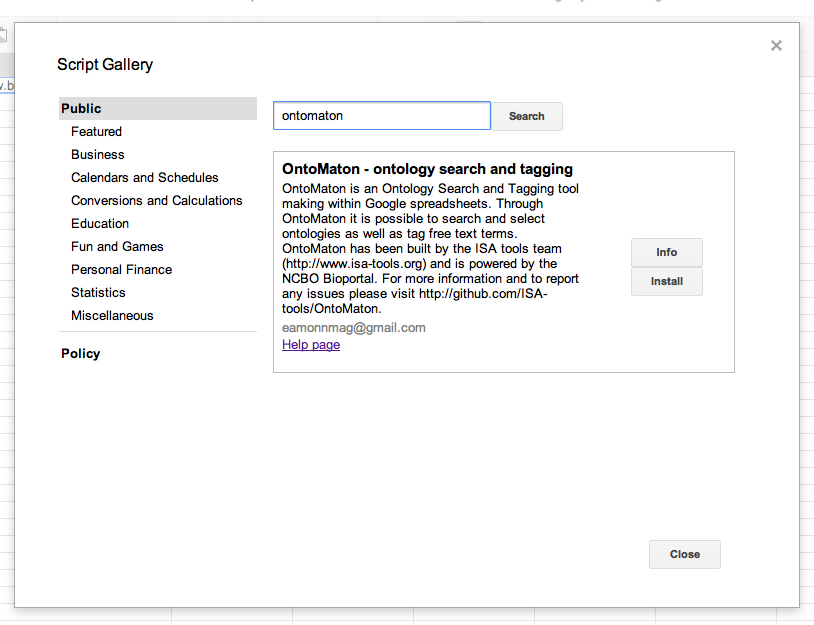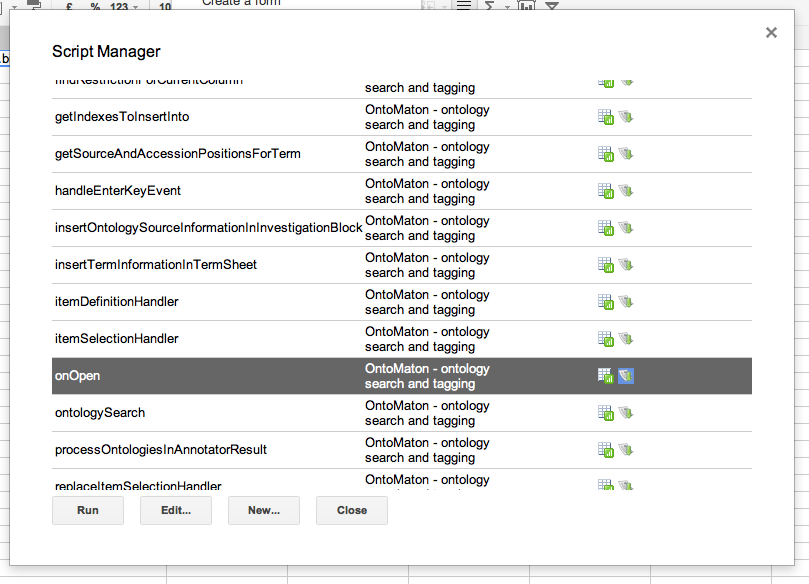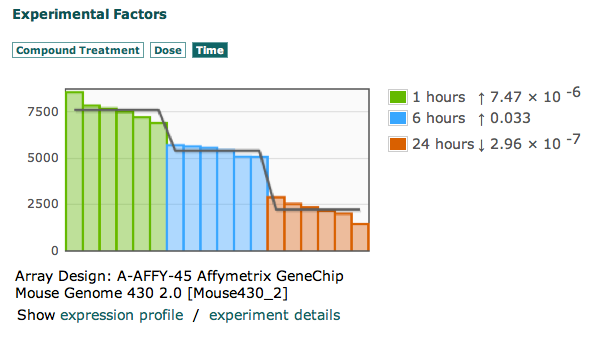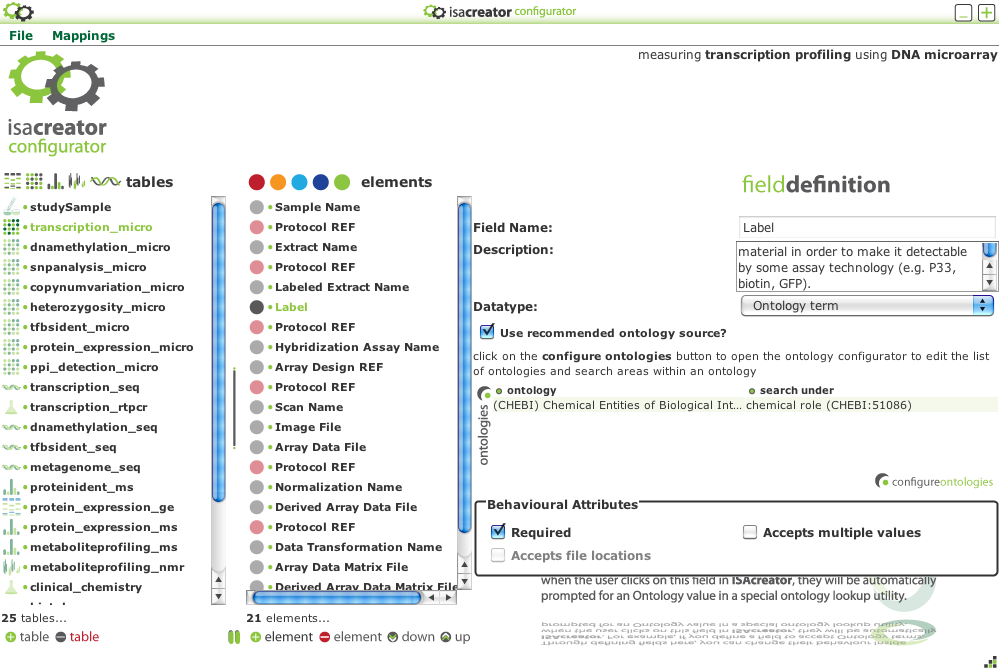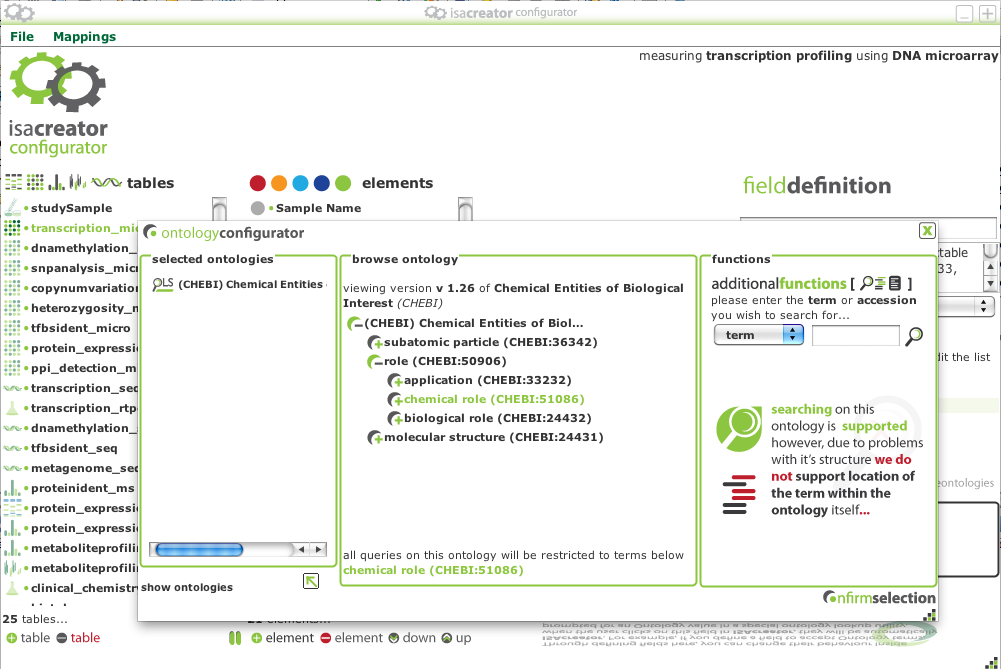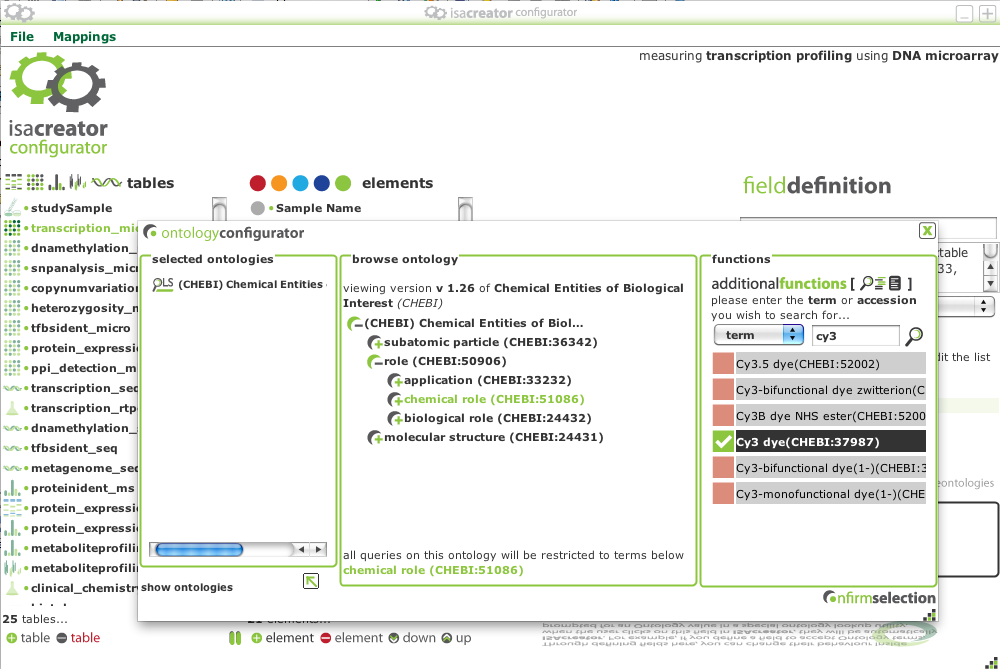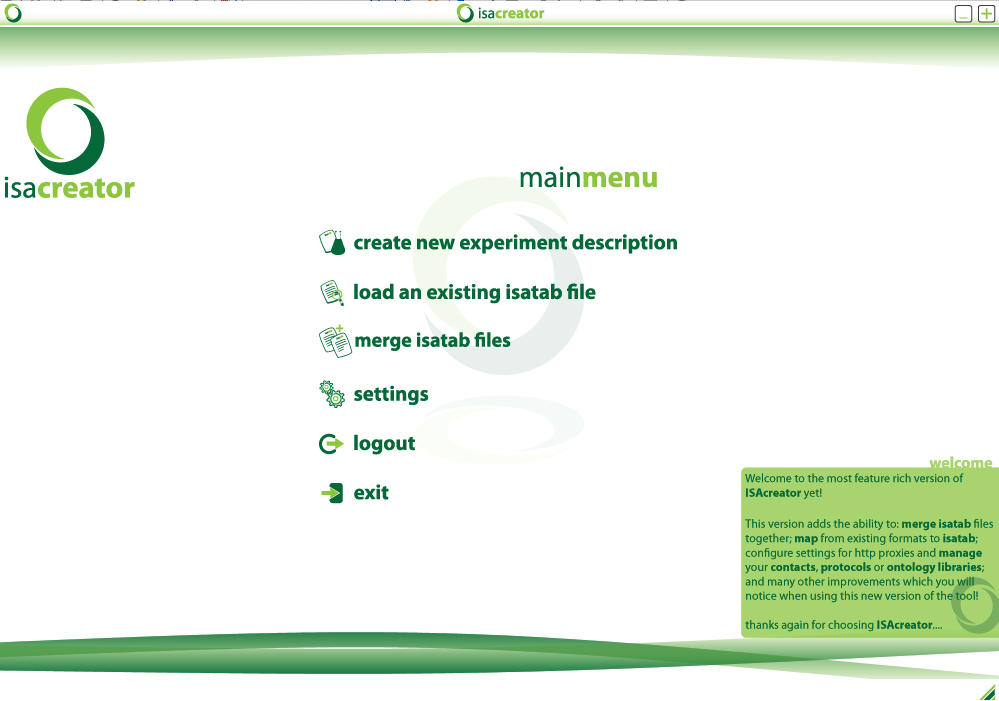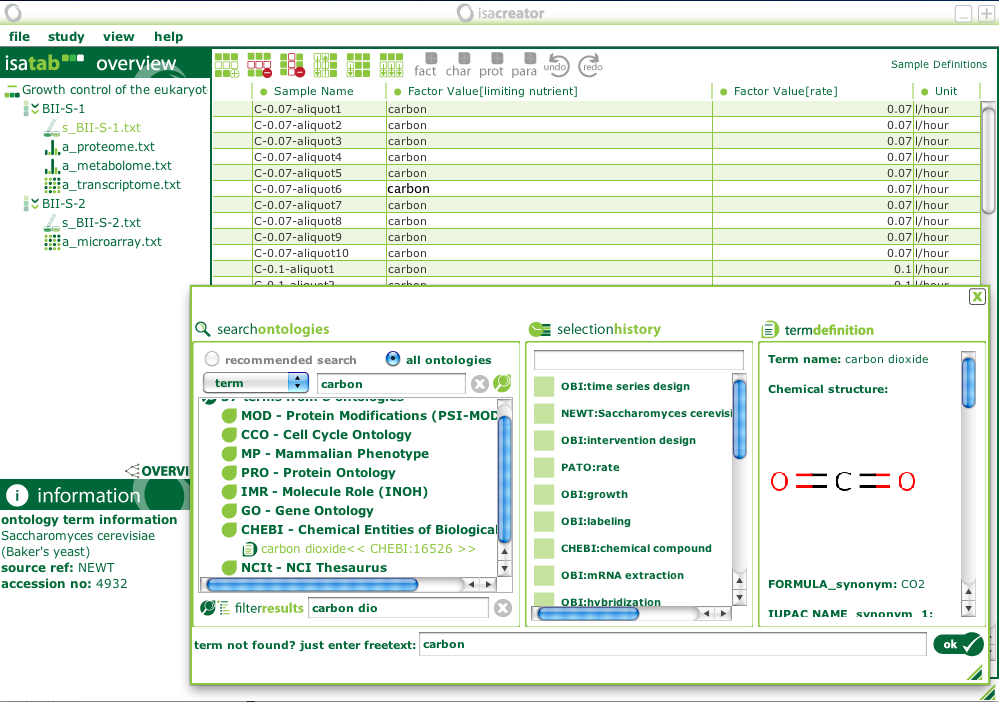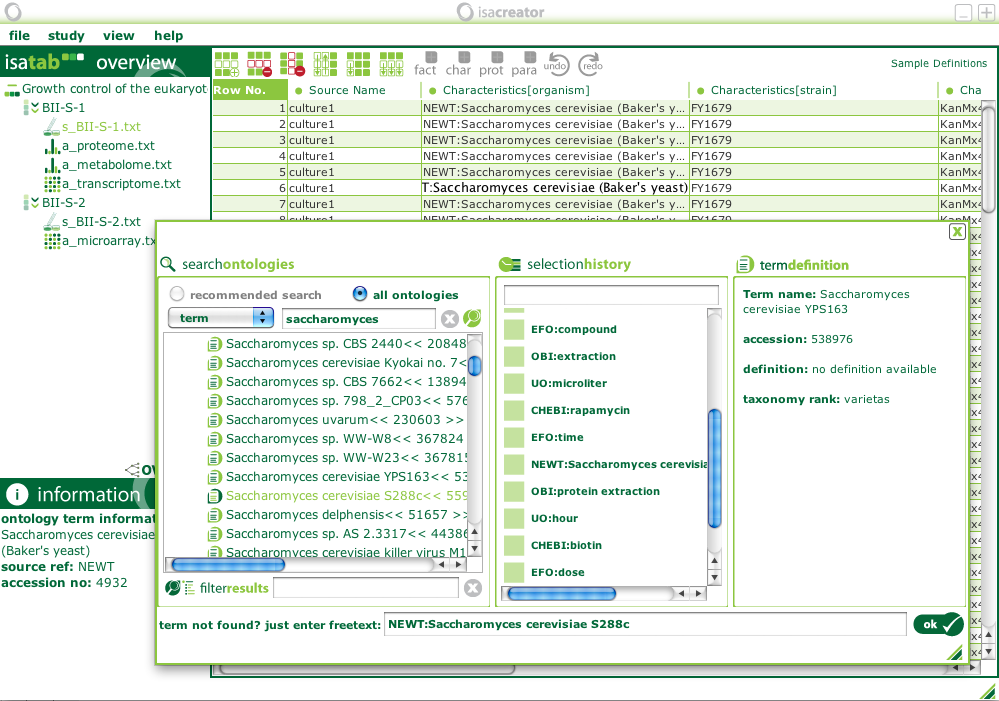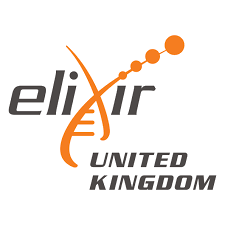This is a very delayed blog post about the OntoMaton Add-on version we released earlier in the year. But better late than never: here we describe the new features we incorporated in the latest OntoMaton version.
OntoMaton is a widget bringing together ontology lookup and tagging within the collaborative environment provided by Google Spreadsheets. The original motivation for creating OntoMaton was to support users to create well-annotated experimental metadata in biosciences in a collaborative way, while keeping track of different versions. Google Spreadsheets provide such facilities for collaboration and versioning, so we combined them with ontology search and tagging functionality offered by the NCBO BioPortal web services. BioPortal is a web-based repository for biomedical ontologies/terminologies with functionality for searching and visualizing the ontologies and support ontology-based annotations.
For more information about OntoMaton and its motiviation, see our publication in Bioinformatics and our previous blog posts.
After our initial version of OntoMaton,
- Google launched Add-ons for Docs and Sheets, deprecating the Apps Script applications and the Script Gallery, used in the original OntoMaton version
- BioPortal released a new API for searching ontology terms and annotator services (see BioPortal 4.0 release notes), deprecating the old API earlier in 2014
Consequently, we upgraded OntoMaton to the latest versions of these services.
We also took the opportunity to incorporate searches across the Linked Open Vocabularies repository. Linked Open Vocabularies (LOV) is a repository of (RDFS or OWL) vocabularies used in the Linked Data Cloud, and thus, not restricted to bio-ontologies. This addition allows OntoMaton to be used for other use cases, relying on vocabularies outside the bio-domain.
For this new version, the installation procedure with Google Add-ons is as follows:
- Open a Google Spreadsheet and select the Add-ons menu
- Select Get add-ons, search for OntoMaton
- By clicking on OntoMaton, you can find more information about it, including some screenshots.
- Then you can install OntoMaton (by clicking over the Free button) or if it is already installed, you can manage the installation by clicking on the Manage button.
- You will need to authorise OntoMaton to view and manage your spreadsheets (as the Add-on will search over terms from your spreadsheets and incorporate links, etc) and connect to an external service (the REST services that OntoMaton relies upon)
- After that, you will be able to use OntoMaton functionality, accessible from the Add-ons menu
- And that’s it! You can start using OntoMaton for searching and tagging… The functionality is as before, except that when searching you need to select if you want to search BioPortal or LOV.
In the Bioinformatics publication, we shown some of the use cases for OntoMaton. More recently, OntoMaton has been:
- used to create mappings from the ISA-Tab syntax to several ontologies in our linkedISA project
- used to create nanopublications in a reproducibility and data reporting case study
- mentioned in the OBO Tutorial for using and re-using ontology terms, by James Overton
If you are interested in the OntoMaton source code, you can find it in its GitHub repository.
Finally, if you have questions or comments about OntoMaton, contact us (the ISA team) at isatools <AT> googlegroups.com (replacing <AT> for @!). We would love to hear about how you are using OntoMaton!

